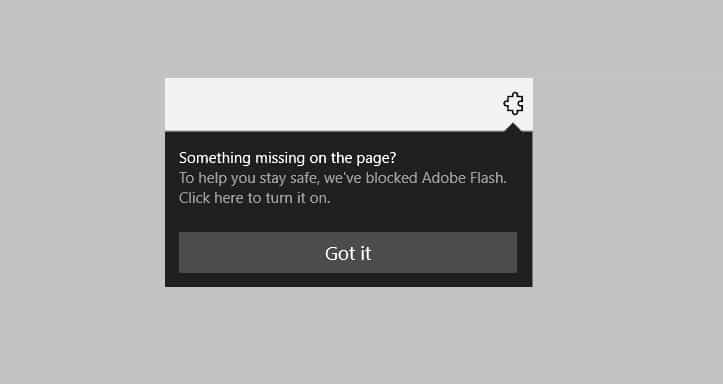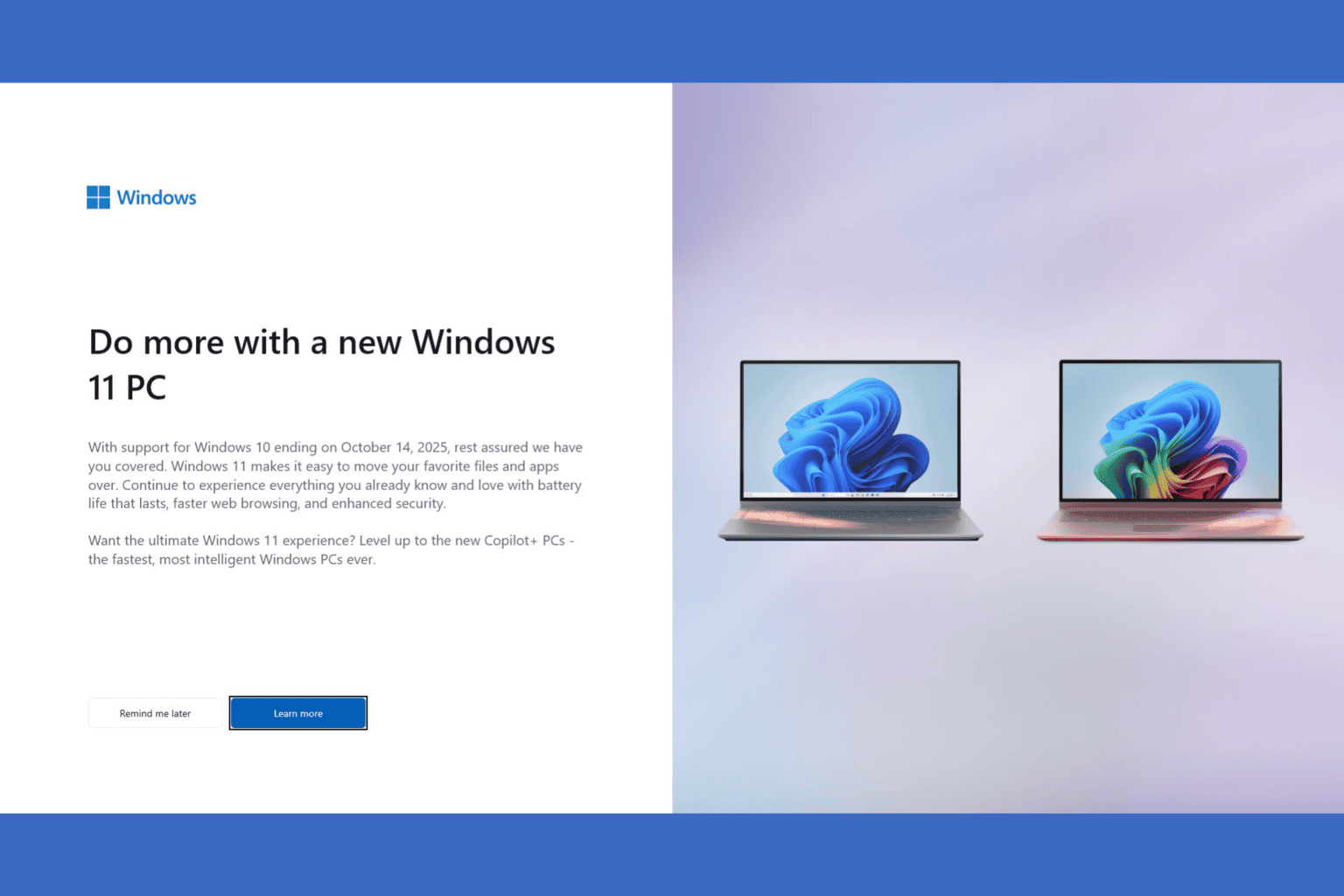'Something missing on the page' prompt in Microsoft Edge
3 min. read
Updated on
Read our disclosure page to find out how can you help Windows Report sustain the editorial team. Read more

Microsoft Edge is an Internet browser that first made an appearance when Microsoft launched Windows 10. This browser is meant to replace Internet Explorer completely in the future as Microsoft’s flagship browser. That’s why it is receiving all of Microsoft’s attention, which means that the company is constantly rolling out new features and updates for the browser. Something missing on the page is one of the features recently added to Edge.
Risks of using Flash on the Internet
The Internet is an open platform, and everyone is capable of uploading whatever they want. This includes the people who create harmful applications and malware for the purpose of damaging your computer or taking control of it to make a quick buck. They may be more widespread than you think. According to a report by ITRC, in 2015 there were 177,866,236 data breaches. A good browser’s job is to block applications and codes that may make your computer vulnerable and not let them affect you. For the most part, Microsoft has done a pretty good job at it. The company go to a great length to ensure the safety of their users.
Adobe Flash is a platform for publishing content on the web; it has been infamous for the security risks it imposes on anyone using it. It is one of the easiest ways someone can target and successfully breach a computer. Even Adobe has no plans to continue Flash, and it has plans to completely stop supporting it after 2020. That’s why modern browsers will automatically block any Flash content on a page and won’t let it run without explicit permission.
Why Microsoft added, the “something missing on the page” prompt
This is Edge’s way of telling you that it has found potentially harmful material on this site and stopped it from executing. Previously, Edge would just silently block the fFash elements in the browser, and you had to click on the element to let Flash run. You could easily miss the blocked content and didn’t even realize the site was not completely displaying, or you might click on the Flash content by mistake and become yourself vulnerable by mistake.
That’s why Microsoft decided to bring attention to missing content (specifically Flash) the first time you visit any website. It’ll inform you of the missing content on the page and ask if you want to allow it. You can also specify that you want Flash to always run on certain trusted websites; next time you visit them, the Flash content will automatically run and Edge won’t interfere.
Conclusion
All in all, Something missing on the page is a security addition to Edge, and there is nothing to worry about. Make sure that you keep your computer safe by not visiting and downloading things from questionable websites, and don’t allow Flash to run on websites you can’t trust. Tell us in the comments section if you or your company has ever faced security issues because of Flash, and what do you think about Adobe moving away from Flash and virtually killing it by 2020?
RELATED STORIES TO CHECK OUT:








User forum
0 messages